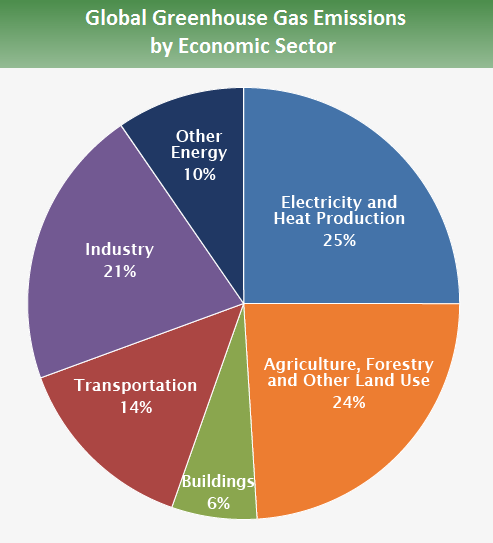What is changing our global climate?
Carbon dioxide builds up in that thin blue line of atmosphere that is around our planet. This and other Green House Gases reduce the amount of heat that can reflect back out of the atmosphere.

What is our homework assignment?
Step by step we need to reduce our carbon emissions by 80% below 1990 levels while increasing our ability to draw carbon out of the atmosphere. This means we are heading into a clean energy economy using solar, wind and geothermal to create at least 75% of our energy instead of the 75% of coal and fossil fuel that we use now. We also need to plant and protect our green spaces, meadows, wetlands and forests which absorb a lot of CO2 while providing oxygen. Increasing soil carbon through grassland restoration could also have a significant impact on the future of global health.
What is The Precautionary Principle?
If you think there is even a remote possibility of something as catastrophic as climate change shouldn't you take precautions. If your still not convinced climate change is a problem even after all these storms and fires and if you still think the majority of the scientific community has it wrong, that does not preclude you from proceeding cautiously. Just like humans the planet needs us to be cautious with its health. Taking care of it also takes care of yourself and your family.
Step by step we can reach our goal!
Incremental progress made regularly can get us to our goal. If the entire energy landscape made annual progress, reducing climate-warming gases like CO2 by 5% a year, we could achieve a carbon balance. Steps in energy efficiency, new clean technology, taxation, carbon pricing, and conservation, as well as everyday savings with less food and material waste all add up to make a collective big difference.
We have already made progress.
We have increased our wind and solar power 1,000% in the last five years. We need to continue this shift, to make incremental progress as even at that pace it is less than 15% of the total energy needed in the US. We still have a long way to go to keep our kids safe. I like to think of carbon as natures currency. Nature stores carbon in trees, plants, soil, coal and oil and it releases carbon in combustion and the decomposition of organic material. As we have gotten a bit wild in how much CO2 we burn we essentially have built up a carbon debt to the environment that has a compounding negative effect on crucial life systems, like the air we breath and the water that supports our oxygen supply. There is and will continue to be a dollar cost associated with drawing down CO2 from the atmosphere in real dollars of about $15 to $450 dollars a ton depending on the method.There is also a dollar cost to infrastructure loss calculated that each excess ton of CO2 will cost society in infrastructure alone about $415 per un-sequestered ton of CO@ (Nature Sept. 2018). The cost to habitat, health care, animal populations, civilizations may be much higher. Currently, we are not paying that cost, we have allowed fossil fuel companies a free ride to build up societal environmental debt. They are leaving it it as an unpaid debt that is adding up to trillions of dollars. We are using more resources than the planet can expend and we must change our behavior today to avoid more catastrophic changes, more debt and less quality of life. We already have mass extinction, millions of starving children, wars and a growing number of climate refugees. What will it take to inspire you to change your behavior and protect your children from the devastating affects of the fossil fuel industry? A Buddhist saying is, eat half, walk double, laugh triple and love without measure. It might help you align with your life rather than that driven by corporate incentives to profit and dictate what you want.
How does carbon effect the environment?
Carbon is a building block of life and a form of stored energy. When fossil fuels are burned for energy (combustion), carbon is released. Carbon compounds move through plants and animals, the air, the ocean, and the earth. Carbon present in the air as carbon dioxide contributes to the "Greenhouse Effect" and related global warming. "Carbon sequestration" describes both natural and man made processes for capture and long-term storage of carbon that are being employed to combat global warming. Follow the links below to learn about the carbon cycle, the greenhouse effect, and ways to reduce carbon dioxide emissions.
Carbon is present throughout the natural environment in many forms. Carbon is present in the air as carbon dioxide, and contributes to the "Greenhouse Effect" and global warming. Efforts are being made to reduce the amount of carbon dioxide in the atmosphere to counter this effect.

How do I calculate my carbon footprint?
The average American carbon footprint is a whopping 20 metric tons a year! This includes the emissions from your home, car, air travel and everything you use and eat. See how you compare and then take a few simple actions that can make you Cooler. Check out how cool you are with this carbon calculator.
How do I shrink my carbon footprint?
In addition to making your home more cost and energy efficient, driving fewer miles and reducing meat consumption, there are many energy efficiency and conservation practices that reduce the consumption of carbon-based fuels (e.g., natural gas, oil, coal, or gasoline), decreasing carbon dioxide emissions.
